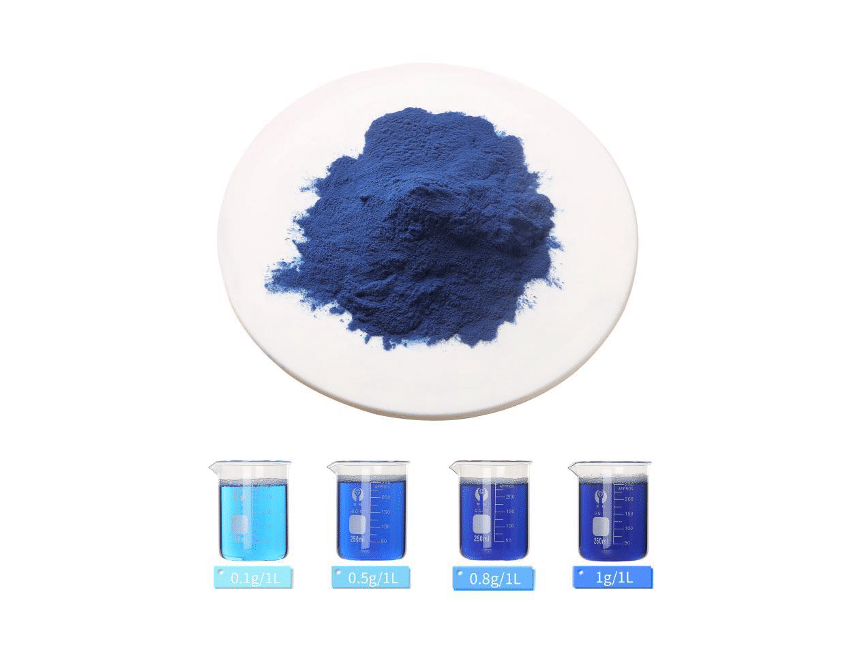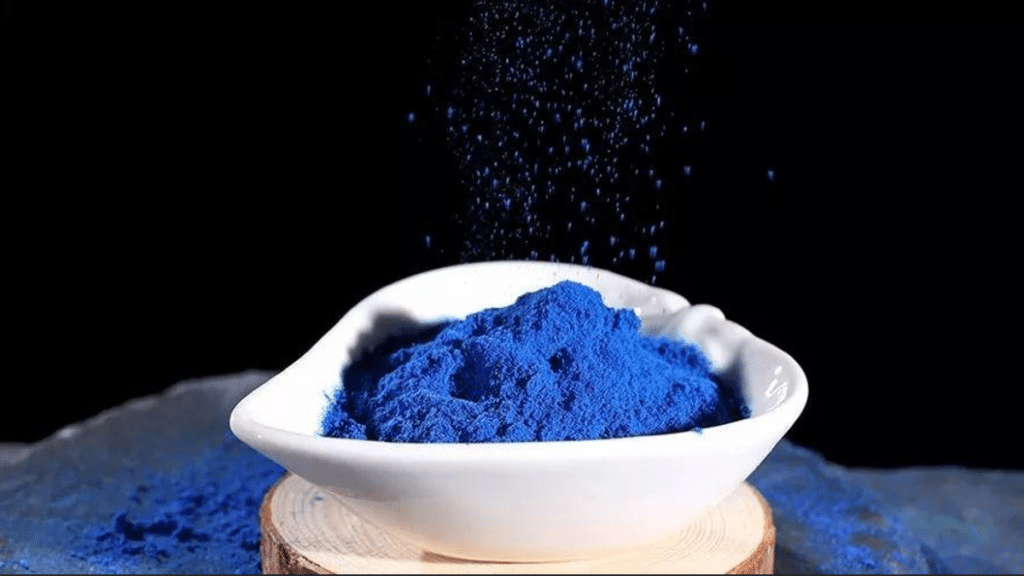Food dyes can convert ordinary food items into visually appealing creations. Synthetic food dyes, albeit widely used, may pose an adverse impact on the environment. This calls for natural alternatives. Natural blue dyes, for instance, have gained wide popularity among consumers and catering businesses. Read on to learn about the applications of natural blue food dyes, the common sources, and more.
Applications of Natural Blue Dyes
Natural blue dyes are generally derived from plants and algae to add a blue hue. They are utilized to improve the look of food. These natural pigments can also be employed in various food items to produce desirable colors. The following are some of the food items in which natural blue dyes can be used:
1. Smoothie
Natural blue food dyes can be utilized to make a blue smoothie. A pinch of vibrant blue hue can be combined with a frozen banana and the addition of coconut milk to make a flavorful and healthy smoothie.
2. Ice Cream
The uses of natural blue food coloring also encompass ice cream formulations, where it enables the ice cream to mimic the appearance of blueberries, Merlot, Cabernet Sauvignon grapes, and similar fruits.
3. Pudding
Blue food dyes can also be used to color the milk and create visually stunning puddings. Whether incorporated into the pudding itself or used as part of decorative elements, these dyes offer a natural alternative for achieving a pleasing blue hue.
4. Candy
Natural blue coloring can be used creatively and efficiently in candies to improve their appearance while meeting consumers’ desire for clear labels and natural ingredients. This is particularly important for consumers seeking confectionery products with minimal artificial additives.
5. Bakery Products
Natural blue dyes give a color for use in bakery products such as biscuits, cookies, cakes, and pastries. In bakery items, natural blue food dyes such as butterfly pea flower extract or spirulina extract powder can be employed. These colors are mixed into the mixture before baking.
Common Sources of Natural Blue Dyes
People have the misconception that blueberries provide natural blue dye. Blueberries appear blue when picked but turn red/purple when crushed. At a neutral pH, the color found in the skin is blue, but when contacted with the acid in the berries, it turns red. To address this misconception, it is worth mentioning that there are some alternative sources of natural blue hues. Three notable examples include:
● Red Cabbage
The blue hue in red cabbage comes from anthocyanin, a water-soluble pigment. By slicing red cabbages and boiling them with soda water, a blue hue can be achieved. However, if cooked red cabbage leaves are encountered with alkali components, they will ultimately turn bluish-purple. This makes red cabbage less versatile as a food dye.
● Blue Spirulina Powder
Blue spirulina powder, a natural food coloring derived from blue-green algae, obtains its blue hue from phycocyanin. Beyond imparting appealing blue tones to various products, spirulina extract powder offers a nutritional boost. It is high in protein and amino acids essential for human bodies and also acts as a powerful antioxidant.
● Butterfly Pea Flower Extract
Butterfly pea flower extract is a natural dye that gives a stunning and eye-catching blue hue to diverse food items. This dye can also achieve colors like pink, purple, and blue when exposed to acidic ingredients. With its strong antioxidant function, the butterfly pea flower extract offers many nutritional benefits.
BINMEI Offers Quality Natural Blue Dyes
BINMEI is the top source of superior natural colorants. With their high-quality butterfly pea flower extract and blue spirulina powder, you can discover bright, natural blue colors.
The butterfly pea flower extract is fully water-soluble and offers bright denim shades with its stability under heat and light.
The blue spirulina powder is also completely soluble in water, making it suitable for producing layered beverages. BINMEI takes pleasure in providing quality blue spirulina powder, butterfly pea flower extract, and other natural dyes. These natural blue colorants effectively improve product appearances while still fulfilling the highest quality standards.

Conclusion
Environmentally conscious consumers are increasingly opting against synthetic food dyes. Natural food coloring offers vibrant colors and numerous advantages and serves as an excellent alternative for catering businesses aiming to enhance the visual appeal of their foods.
BINMEI is a company that provides natural blue dyes to be used in foods. It aspires to deliver the greatest customer experience possible by offering high-quality spirulina extract powder, butterfly pea flower extract, and other natural colorants and coloring foods. Visit BINMEI’s official website to discover more about their offerings.
